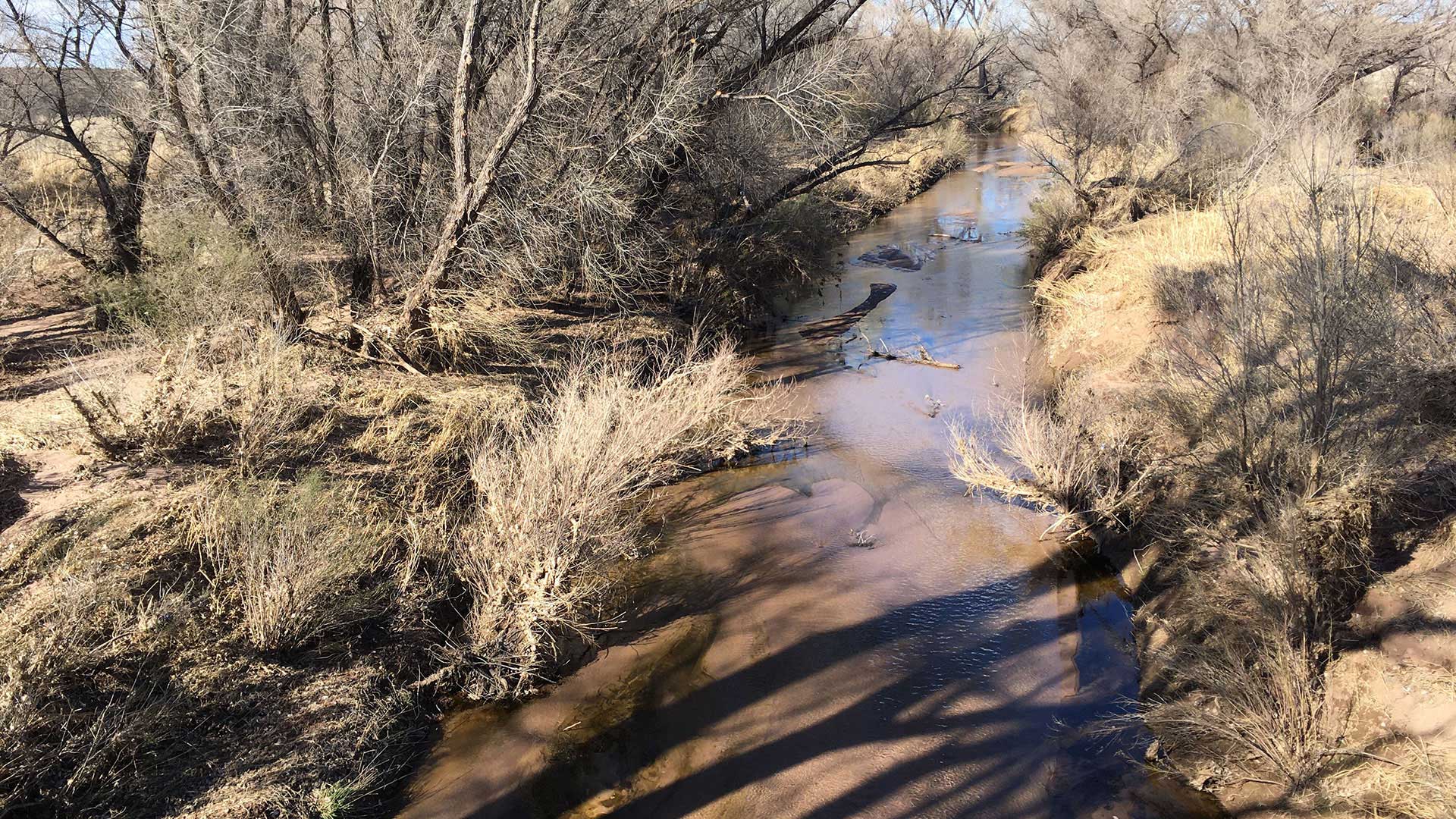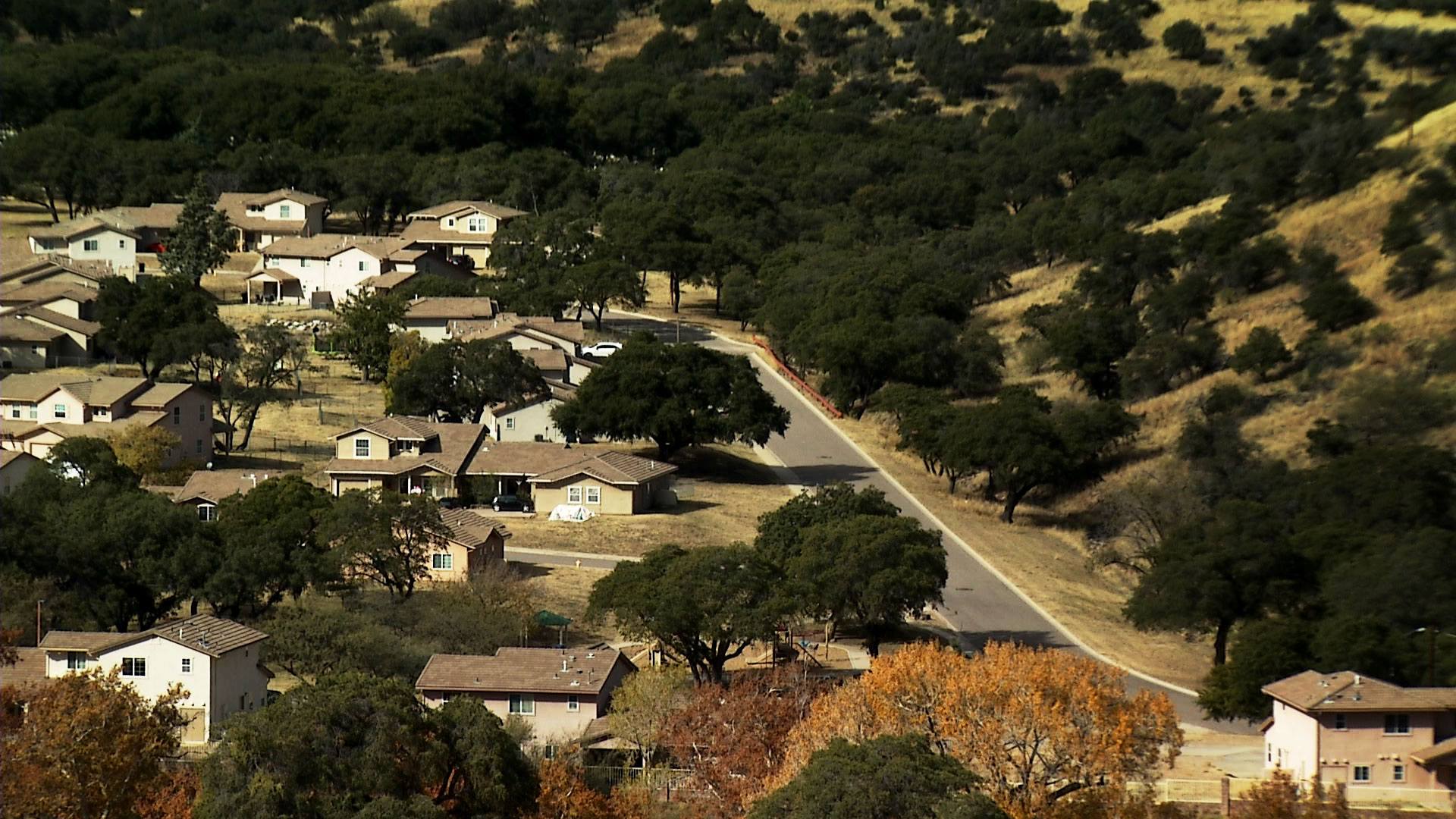 The San Pedro River in late January, 2020.
The San Pedro River in late January, 2020.
Fort Huachuca and the San Pedro

Conservationists have long criticized how much groundwater Fort Huachuca uses, saying the army post in Sierra Vista is depleting the underground flows that support the San Pedro River. The fort and city of Sierra Vista point to different conservation efforts on and off post, which they say help offset their water use.
Robin Silver is a co-founder of the Center for Biological Diversity, which has repeatedly sued Fort Huachuca over how its groundwater use impacts the San Pedro River.
Last December, the center filed an intent to sue Fort Huachuca and the U.S. Fish and Wildlife Service based on a report it says Fort Huachuca covered up that showed their groundwater use was harming the river.
“The San Pedro River is dying, in good part, in fact in essentially all parts because of the excessive groundwater pumping of the area,” Silver told The Buzz. “Most of the groundwater pumping in the area derives from the military activities at Fort Huachuca.”
Silver said the intent to sue stems from a 2010 report that identified that groundwater pumping had already begun to hurt the San Pedro River by 2003 and would continue to do so for decades. According to Silver, officials at Fort Huachuca buried the report in order to get approval from the U.S. Fish and Wildlife Service to avoid downsizing Fort Huachuca.
Silver said the center is holding off litigation while they continue to talk with the Department of Defense.
Fort Huachuca, their legal counsel at the Pentagon, and the U.S. Fish and Wildlife Service all declined interview requests due to the pending litigation.
 A view of housing at Fort Huachuca from the post's Reservoir Hill in December 2019.
A view of housing at Fort Huachuca from the post's Reservoir Hill in December 2019.
Chuck Potucek is Sierra Vista's city manager. He spoke to The Buzz about the city's water use and the pending litigation against the fort.
“We’re not involved in the notice of intent to sue between the fort and the center,” he said.
Potucek said that this intent to sue is similar to other legal action that he’s seen take place during his more than 30 years of working in Sierra Vista.
Though the city did not meet its goal to reach a sustainable level of water usage by 2011 — the intent of part of the National Defense Authorization Act of 2004 — Potucek said it continues with conservation efforts.
“It’s still an ongoing work-in-progress, and I think it always will be,” Potucek said.
The city of Sierra Vista is a member of the Upper San Pedro Partnership, a coalition of local, state and federal agencies and groups that work towards conserving the river. Recently the partnership received a $99,000 federal grant to create a web portal to share science and data collected with water managers and the public.
In 2016, the USGS published a report that sought to evaluate efforts to achieve sustainable groundwater use in the Sierra Vista subwatershed. It was a compilation of nearly a decade's worth of annual reports required by the National Defense Authorization Act of 2004.
Bruce Gungle and Jim Leenhouts work for the USGS’s Arizona Water Science Center. Gungle was the lead author on the 2016 report.
"It was obvious at that point [in 2016] that sustainability had not yet been achieved as they sought to do by then, but there had been significant progress toward that goal,” Gungle told The Buzz. While their data clearly show declines in groundwater levels on Fort Huachuca, Gungle said the connection between that and reduced base flow to the San Pedro River is less clear-cut.
Leenhouts said that a number of factors contribute to the effectiveness of regional water recharge projects like those of the Cochise Conservation and Recharge Network, including proximity to the river. Still, he said, it can take years, or hundreds of years, before you see changes to the flow of the river because of such projects.
Gungle said the term "sustainable groundwater use" can be hard to define, but compared sustainability to a stool with three legs: social factors, environmental factors and economic factors.
“In terms of hydrology, if you can keep water use amongst those three legs of the stool in balance, then you have sustainable use,” Gungle. But he said there's another governing factor, "and that is that amongst those three, you're still keeping enough water available so that 100 years from now, this continues to be the case, that you're not slowly draining the aquifer."



By submitting your comments, you hereby give AZPM the right to post your comments and potentially use them in any other form of media operated by this institution.